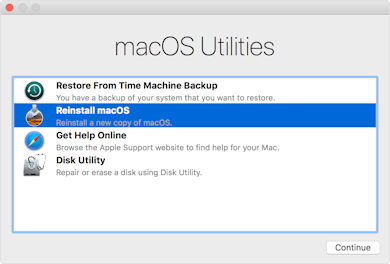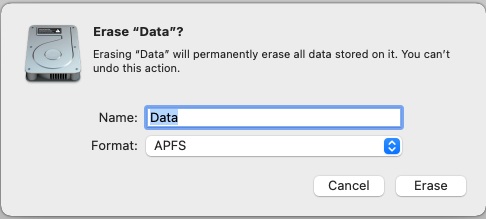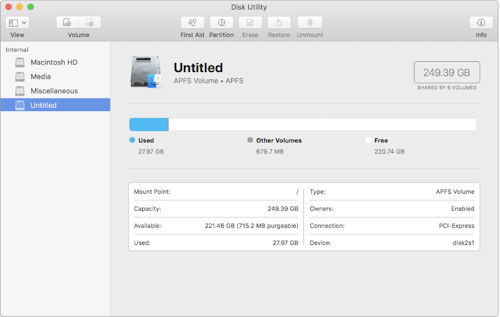Mac OS FAQ |
Updated: 18 Sept 2025
0. Where can I get Mac OS?

You can get mac OS from Apple's App Store or provided with new Apple Mac computers.
Older versions of macOS can be downloaded via the App Store from previous Purchases from your Apple account.
You can also download mac OS via Apple's MacOS page or from IsoRiver.com.
1. How do I install Mac OS?
There are two ways to install: a clean or fresh install or an upgrade
from an older version of Mac OS. For a clean installation you need to have
a blank hard disk, boot off the Mac OS USB drive and then follow prompts on screen.
You also Reinstall MacOS via the Recovery utility windows over the internet (Command +R):

For an upgrade, you need to boot into MacOS first, then run the App Store icon from the dock, select Mac OS from the application list and download it (12GB) . On Applications and run Install MacOS name e.g. Tahoe, Sequoia, Sonoma, etc) and let it upgrade your system to the latest version of MacOS. You may need to replace or upgrade applications afterwards, run each of them in turn to sure that they run okay.
You can also create you own installation media, on USB using the createinstallmedia (Q.4) tool from within the installation file from the Terminal command line.
2. What are the requirements for Mac OS Sequoia and Tahoe?
You need a Apple iMac that has a 64 bit Intel i3, i5, i7, Xeon or Apple Silicon M1, M2, M3 or M4processor, manufactured from late 2018 onwards and supports 64 bit EFI and Metal.
For memory, you need at least 4 GB of RAM (8GB recommended). For hard disk space, you need at least 20 GB of free space to install the OS on a 256GB storage disk.
For additional requirements, see Apple's Technical Specs.
The latest Mac OS 26, Tahoe, require the following:
There are two new Silicon Processors: M3 and M4 replacing older M1 and M2 processors:
The M1 Ultra supports upto 20 core CPUs,
64 code GPUs, upto 128GB RAM and 800 GB/s memory bandwidth.
The M2 supports upto 8 core CPUs,
10 core GPUs, upto 24GB RAM, 2 TB of storage and 20 hrs of battery life.
The M2 Pro supports 12 core CPU,
16-19 core GPU, upto 32GB RAM, 200 GB/s memory bandwidth and supports 8 displays.
The M2 Max supports 12 core CPU,
30-38 core GPU, upto 96GB RAM, 400 GB/s memory bandwidth and supports 8 displays.
The M2 Ulta supports 2x12 core CPU,
60-76 core GPU, upto 192GB RAM, 800 GB/s memory bandwidth and supports 8 displays.
The M3 supports upto 8 core CPUs,
14-18 core GPUs, upto 36GB RAM, 150 GB/s memory bandwidth.
The M3 Pro supports upto 14-16 core CPUs,
30-40 core GPUs, upto 128 RAM, 400 GB/s memory bandwidth.
The M3 Max supports upto 14-16 core CPUs,
30-40 core GPUs, upto 128 RAM, 400 GB/s memory bandwidth.
The M4 supports upto 9-10 core CPUs,
10 core GPUs, 1.5x faster than the M2.
3. How do I uninstall or remove Mac OS?
You can remove Mac OS by booting into recovery mode, load the Disk Utility, select Erase tab and erase the Mac OS partition.

4. Where do I find out if my hardware is compatible?
Check with the manufacturer's website to see if hardware or software is compatible with Mac OS.
5. Do I need a Serial Number or activation for Mac OS?
No activation is required. Mac OS software is completely free from Apple, so there are no serial numbers, product keys or any activation required to use Mac OS.
You will need to use your Apple ID to access and download Mac OS from the App Store.
6. Which software will I probably need to upgrade?
Any software that accesses the system at a low level such as Virus Scanners,
CD Burning software, Disk utilities will
need to be updated from earlier versions. Always, check manufacturer's
website for latest updates which may have been released since Mac OS was
released. It is a good idea to run the the Update feature from App Store icon from the dock to see which software is incompatible and needs an
update.
If you are upgrading from Mojave or earlier, then you need to replace or remove any 32-bit software with 64-bit versions.
7. What steps should I take before upgrading from older Mac OS to latest Mac OS ?
First do a backup of all your data, internet shortcuts and Email files to disk, DVD, iCloud, or One Drive storage. If using Time Backup, use that to backup data. Make multiple copies if possible.
Also, backup any vital Applications that you use, to disk. Make a copy of your current MacOS to USB drive, if you need to revert back.
To see what hardware and drivers you have on your machine, use the System Information tool from About this Mac menu option and save it as a file for reference.
8. What server software can I install on Mac OS?
Mac OS already comes with Apache web server, and File and Print sharing facilities (see System Preferences). Various third party software is available to install other server software.
See alternative software for similar functionality for mac OS.
9. How do I migrate files from my old system to my new system?
Mac OS comes with a Time Machine, which will allows you
to backup all your data files and settings to disk. It will allow you to restore them to your new system afterwards. See these instructions on how to use it.
Alternatives include
Retrospect Backup and many others.
10. Where are My Documents stored in Mac OS?
In Mac OS ,documents are stored in: \Users\username\Documents. You can use your personal Public folder to share files with other users.
Other shared or common documents are placed in \Users\Public Folder.
11. How do I modify the boot files in Mac OS?
You can use the Startup tool in System Preferences to determine which partition to boot from.
For a menu selection, you can use rEFInd which
allows you to select which OS to choose including Windows or Linux.
12. How do I change disk format?
You can use the Disk Utility to reformat drives in Mac OS, although this will lose data, unless backed up first. Mac OS supports multiple disk formats including:
* Mac OS Extended (Journalled) - Hierarchical Filing System, the default format used. It has Boot file, a Master Directory Block, Volume bitmap, Extent overflow file and a Catalog file. Use this for Boot disks.
* Mac OS Extended - Original format without the reliability of journaling
* Mac OS Extended (Case-sensitive, Journaled) - As above but uses a more Unix-like case-sensitive file system.
* MS-DOS (FAT) and exFAT - Used for Bootcamp partitions and when sharing external drives with Windows users. exFAT is best for modern and cross-compatibility with Windows.
* APFS - Apple File System. New file system for mac OS 10.13 for the system drive on SSD drives, instead of the standard SATA drives. Do not use for external boot disks.
13. Can I resize disks in Mac OS?
You can resize disk in Mac OS using the Disk Utility. To resize the main system disk, will require you to boot from an external drive or from Recovery menu. Then you can use the partition screen to resize the partitions how you see fit but dragging the edges of the partitions to the size you want.

14. How can I read stuff written in Japanese, Chinese or Korean languages?
Mac OS includes many more languages and do not to need to be installed separately, you can change language by opening the System Preferences, Languages & Region. Click on the plus (+) icon to add a language. It will prompt which language to use as the Primary Language, select the one you want to use. You can also set language or region for specific apps only in the Apps tab.
15. Can I use remote access tools to Mac OS?
In System Preferences, Sharing, you can enable Screen Sharing feature to allow other Mac uses to access your screen. To connect use the Connect To Server option on the Go menu, and enter vnc://ip-address/ to connect to the shared mac. You can also enable Remote Management, and use Apple's Remote Desktop software to manage multiple Mac's. For command line access, you can enable Remote Login and login to the Mac using a SSH (Secure Shell) client or use a secure SFTP program such as the Filezilla Client and others.
16. How can I tell which version of Mac OS I have installed?
Select 'About my Mac' on the Apple menu to view the version of Mac OS
17. How do I deploy Mac OS to multiple computers with one image?
If deploying an Mac OS X image to multiple computers then use the new JamF, Parallels and MECM, CloneZilla, Deploy Studio , or NetInstall. Deploy Studio tools includes: image and deploy tools, system reconfiguration, automation support, real time deployment monitoring and it is Freeware. For One-to-one installation use the Target Disk method.
18. I am the only user of the computer, how do I auto-login?
If security is not an issue, then you can enable auto-login. Open System Preferences, select Users and Groups, then Login Options and enable and set the Automatic login option to the user account of choice (must be a local account).
19. I am getting errors when booting Mac OS. What do they mean?
A list of errors and descriptions can be found here: Trouble shooting boot errors. Also, check the system and application logs using the Console utility.
Go to Compatibility.